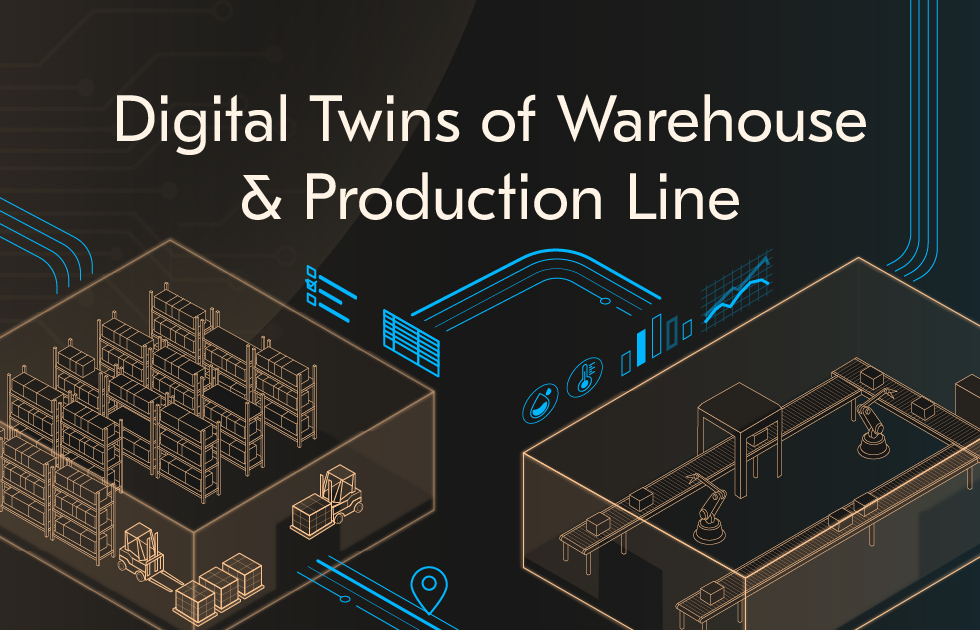
Key Takeaways
- A unified Airport Operations Management (AOM) system replaces fragmented tools with a single platform, enhancing collaboration and responsiveness.
- Features like real-time flight tracking, airside management, and baggage control improve logistics, safety, and service quality.
- The airport management software market is expected to grow from $4.5B in 2024 to $8.2B by 2033, driven by rising passenger volumes and automation needs.
- With increasing digital reliance, cybersecurity and real-time data integrity are top implementation concerns.
As a large complex structure, an airport performs many operations simultaneously. Today, centralized airport management software with advanced functionality capable of keeping all the processes under control makes a lot of sense. Especially compared to multiple tools jumbled together. It’s safer, more flexible, and helps airports save their costs.
With the rising number of flights globally and the need for automation, the airport technology market is steadily growing from $13.99B in 2025 to $ 17.24B in 2029. Thus, flight companies globally are embracing emerging technologies to keep up with the digitalized times.
With 20 years of hands-on experience in software development and consultancy for different industries, at Acropolium, we have real-life experience on how to develop an airport operations management system that will drive better results for you.
In this article, we’ll cover operations software benefits and recent trends, the core functionality to adopt, and the challenges you may face during software implementation.
What Is an Airport Operations Management Software?

Airport operations management solution is a comprehensive system that helps airports bring all their daily operations into one place. Instead of using separate tools for things like flight schedules, baggage handling, gate assignments, and security checks, this solution connects everything in a single platform.
This makes it easier for airport staff to work together, avoid delays, and provide a better experience for travelers. Airports are now looking for ways to handle more people while keeping operations safe, cost-effective, and on time—and software like this is the answer.
In 2024, the global market for airport management software is worth around USD 4.5 billion. It’s expected to grow significantly, reaching USD 8.2 billion by 2033, thanks to rising passenger numbers and the increasing need for efficiency and automation.
These systems also offer advanced tools like real-time data monitoring, predictive maintenance, and built-in security management. That leads to fewer breakdowns, faster responses to unexpected issues, and safer overall operations.
With stricter regulations and greater pressure to perform efficiently, airport operations software moves businesses toward centralized solutions that offer full visibility and control.
Advantages of Airport Management Software

As airports navigate increasing passenger volumes and stricter operational standards, efficient technology has become essential. Airport management solutions provide a unified approach to complex processes, enhancing agility, efficiency, and service quality. Let’s explore the key benefits these systems offer for both daily operations and long-term success.
Reduced Delays and Improved Turnaround Times
Airport management software solutions help minimize delays by connecting key operational teams, like ground handling, maintenance, and gate staff. Real-time updates allow for quicker responses to changes, ensuring aircraft are refueled, cleaned, and boarded on time. The faster turnaround not only keeps flights on schedule but also improves airport capacity.
Enhanced Passenger Experience
Fewer delays, better baggage handling, and more efficient check-ins lead to less stress and more satisfaction. Process automation delivers a seamless journey by ensuring that behind-the-scenes processes are well-coordinated and disruptions are quickly addressed.
Operational Efficiency and Cost Savings
By automating routine tasks and optimizing how resources are used, these systems help airports run more efficiently. Using big data algorithms, they reduce manual work, minimize waste, and make it easier to spot inefficiencies early. Over time, this translates to significant cost savings, making operations leaner without sacrificing quality or safety.
Real-time Visibility and Control
Airport operations systems come with a live view of ongoing operations. From tracking aircraft movements to monitoring equipment status, this visibility helps decision-makers act quickly and confidently. Live data enables proactive problem-solving and reduces the chance of small issues turning into major delays.
Improved Coordination Across Stakeholders
Airports rely on many different teams working together: airlines, ground services, security, maintenance, and even hotel bookings. A centralized tool keeps everyone on the same page, with access to shared information and timelines. Such cohesive coordination leads to smoother workflows, fewer misunderstandings, and better overall performance.
Key Features of Airport Operations Management System

A modern management system for airports brings together a wide range of tools to ensure operations run smoothly, safely, and efficiently. Every feature is designed for a specific area of airport activity, helping staff stay informed, make intelligent decisions, and react promptly to changes on the ground.
Real-time Flight Information Management
One of the most critical features of any airport management software is the ability to deliver accurate, real-time flight data. From arrivals and departures to gate changes and schedule disruptions, this module ensures passengers, ground crew, airline staff, and management stay informed and aligned.
The centralization of this information allows airports to minimize confusion, avoid missed connections, and better manage gate availability and passenger communication.
Terminal Operations
The terminal is where most passenger interactions take place. AMS tools designed for terminal operations streamline check-in, boarding, gate assignments, and facility usage. If you optimize how passengers move through the terminal, airports can reduce wait times, improve comfort, and ensure smooth transitions between each travel stage.
These features also support integration with self-service kiosks, digital signage, and mobile notifications from chatbots.
Airside Management
Airside operations, including aircraft taxiing, parking, and turnaround processes, require precise coordination. Today’s airport software solutions are designed for full visibility over ground handling activities, runway occupancy, and apron usage.
This ensures that aircraft are serviced efficiently and safely, with fewer delays or incidents on the tarmac. Enhanced coordination also leads to faster turnaround times and increased runway availability.
Resource Allocation
Efficiently managing airport resources is essential for cost control, accounting, and service quality. The system automates the allocation of gates, baggage carousels, check-in counters, and personnel based on flight schedules and passenger loads.
This reduces idle time, maximizes capacity, and ensures balanced property management where the right resources are in the right place at the right time.
Baggage and Cargo Handling
AMS modules for baggage and cargo streamline sorting, routing, and delivery, reducing the risk of mishandling and delays. Integrated tracking features provide visibility into the journey of each bag or cargo item, from check-in to loading.
This way, you can improve accountability and reduce operational hiccups, notably during peak travel times or when managing high volumes of freight.
Security and Access Control
With safety as a top priority, modern airport operations management platforms include advanced security management features. These tools control access to restricted areas, monitor entry points, and integrate with surveillance systems to ensure compliance with industry policies.
They also provide instant alerts and access logs to help prevent unauthorized entry and quickly address any security breaches.
Passenger Flow Monitoring & Crowd Management
During busy periods, managing passenger movement is vital to avoid overcrowding and maintain comfort. Using sensors, cameras, and real-time data, the system can monitor crowd density in different areas of the airport and adjust operations accordingly, such as opening more security lanes or redirecting foot traffic.
This leads to smoother passenger flow and a better overall airport experience.
Disruption & Incident Management
Delays, equipment failures, or weather disruptions can create ripple effects across airport operations. Airport operations solutions let staff respond quickly by centralizing communication, automating contingency workflows, and updating stakeholders.
Whether it’s rerouting baggage or rescheduling ground services, this module helps reduce the risk of operational downtime and ensures business continuity.
Analytics & Reporting Dashboards
Finally, comprehensive reporting tools allow airport management to make data-driven decisions. Such dashboards pull from all parts of the system to present insights on performance, resource usage, passenger volumes, and more. Over time, the analytics help airports identify trends, optimize operations, and plan for future growth.
Challenges to Consider Before Employing Airport Management Software
While airport operations software brings many benefits, its implementation can be complex. Airports operate under strict regulations with many interconnected systems, so introducing new tools requires careful planning.
Being aware of key challenges in advance helps ensure a more efficient and disruption-free transition.
Legacy System Integration
Many airports are still dependent on older technologies that are not built to connect with modern software. Bridging the gap between old and new systems often demands custom development and careful testing to avoid service interruptions.
Regulatory and Safety Compliance
Airports must comply with strict international and national aviation standards. New airport operations systems must meet these requirements, which often involve complex certifications and documentation.
Real-time Data Synchronization
Accurate, up-to-the-minute information is vital for operational decisions. Delays or errors in syncing data between departments can compromise safety and efficiency. Here, dynamic pricing modules will come into play.
Cybersecurity Risks
With growing reliance on digital infrastructure, airports face increased exposure to cyber threats. Protecting sensitive data and critical systems is a top priority during and after implementation.
Staff Resistance to Change
Employees may be hesitant to adopt unfamiliar technology. Comprehensive training and a user-friendly interface are crucial for encouraging adoption.
High Availability & Uptime Requirements
Airport systems must run continuously without failure. Ensuring round-the-clock reliability, even during updates or outages, remains a major challenge during software deployment.
Technologies Powering Modern Airport Operations Solutions

Sophisticated airport software solutions are driven by a combination of advanced technologies that change the way airports manage daily activities. These tools go beyond basic automation by enabling real-time data analysis, predictive planning, and secure information sharing.
As a result, airports can make quicker decisions, anticipate disruptions, and coordinate more effectively across departments. Let’s explore the rising trends and classic tech approaches that are implemented in many industries from supply chain to finance and hospitality to transportation.
IoT Sensors for Real-time Data
Internet of Things (IoT) devices are now embedded across terminals, runways, and baggage areas to capture live data on temperature, crowd density, equipment performance, and more.
IoT-based airport operation management system data flow helps operators respond swiftly to changing conditions and spot potential issues before they escalate.
AI & ML for Predictive Resource Allocation
Artificial intelligence and machine learning algorithms help airports predict demand, assign resources dynamically, and optimize staff and gate usage. Coupled with big data, these technologies learn from historical trends to improve planning, reduce waste, and keep daily operations flowing efficiently.
Cloud Computing for Scalability
Cloud-based platforms allow airports to scale their software systems quickly while keeping data accessible from anywhere. That’s how companies can ensure that critical information is always available and can be easily shared between departments or external partners.
Mobile Interfaces for Staff Coordination
Mobile tools keep ground staff, maintenance crews, and supervisors connected in real-time, even on the move. Whether updating turnaround times or logging maintenance issues, mobile apps increase visibility and reduce response times across operations.
Digital Twin and Simulation Modeling
By creating virtual replicas of airport environments in airport management software, digital twin technology allows operators to test changes, simulate disruptions, and fine-tune layouts before applying them in the real world. This helps minimize risk and optimize efficiency.
Blockchain for Secure Documentation and Tracking
Blockchain technology enhances the integrity of records such as maintenance logs, cargo manifests, and identity verifications. Its tamper-proof structure ensures transparency, reduces fraud, and simplifies auditing processes.
Real-World Examples and Use Cases of Airport Software Solutions
As more airports embrace tailored AOM systems, it’s playing out in real time on runways, in terminals, and behind the scenes.
Below are real use cases of how integrated systems are transforming daily airport operations into something far more responsive and reliable:
At Hong Kong International Airport, things are getting smarter on the ground. They’ve rolled out an IoT-powered airfield service system that uses sensors to track aircraft turnaround progress in real time. This helps ground crews stay in sync, especially during busy periods, making sure everything from refueling to baggage loading runs more smoothly. It’s part of a bigger push toward a fully digital apron and tower setup—an effort that earned the airport a 2023 ACI award for operational excellence.
Over at Heathrow, British Airways has been busy fine-tuning its operations with a high-tech “Mission Control” hub. By using AI and machine learning, the airline can now spot potential delays earlier, reassign gates on the fly, and even route flights around bad weather. The result? In early 2025, BA hit a record 86% on-time departure rate, up from just 46% in 2008. That’s not just a win for their schedule, but for passengers too.
Meanwhile, Tampa International Airport has taken steps to streamline baggage handling with a centralized tracking system that follows each bag from check-in to claim. While they haven’t shared exact figures, staff say the number of mishandled bags has dropped and everything just flows better across the terminals.
Why Choose Acropolium?
With over two decades of tailoring software, Acropolium understands how to build scalable, secure, and user-friendly products tailored to unique operational needs. And airport management software is no exception!
Our dedicated teams focus on speeding up product development without compromising quality, helping airports launch new systems quickly to meet growing demands. Their expertise includes AI integration, real-time analytics, cloud computing, and custom web apps.
For a deeper look, explore our portfolio’s case study on an AI-powered revenue management and dynamic pricing system in hospitality, an excellent example of our skill in merging advanced tech with real-world business goals.
Case Study: AI-Based Dynamic Pricing Solution
An international hotel chain partnered with Acropolium to develop a custom revenue management and dynamic pricing system that could replace outdated manual processes and improve financial performance across their properties.
Solution
The goal was to automate pricing decisions in live format, enhance forecasting accuracy, and support smarter, data-driven revenue strategies across urban and resort locations.
- We engineered a scalable platform that integrated seamlessly with their existing tech stack and tailored it to handle location-specific pricing factors.
- Key features included dynamic pricing powered by AI, predictive analytics for demand forecasting, centralized control across all properties, and automated upselling suggestions.
Result
- Increased occupancy by 12% through optimized real-time pricing
- Reduced manual pricing workload by 30%
- Boosted total revenue by 15% with intelligent rate adjustments and improved forecasting
Final Thoughts
Airports are evolving into data-driven environments, and centralized airport management systems are now essential to keep pace with operational demands.
These platforms empower airports to reduce delays, optimize resources, and elevate the passenger experience while lowering costs. With a market on the rise and proven tech like AI and IoT already reshaping the industry, future-ready solutions are foundational.
Acropolium combines years of cross-industry development experience with deep knowledge of airport operations to deliver scalable, secure, and efficient AOM systems crafted to your needs. We offer a subscription-based cooperation model with transparent costs and your goals prioritized.
Let’s get in touch and see how we can modernize your airport operations!










![Logistics Management System [2025 Guide]: Use Cases Included](/img/articles/logistics-management-system/img01.jpg)

![Transportation Management Software Development [2025 Guide]](/img/articles/transportation-software/img01.jpg)
![ᐉ Logistics Customer Portal Development: [2025 Guide]](/img/articles/logistics-customer-portal-development/img01.jpg)
